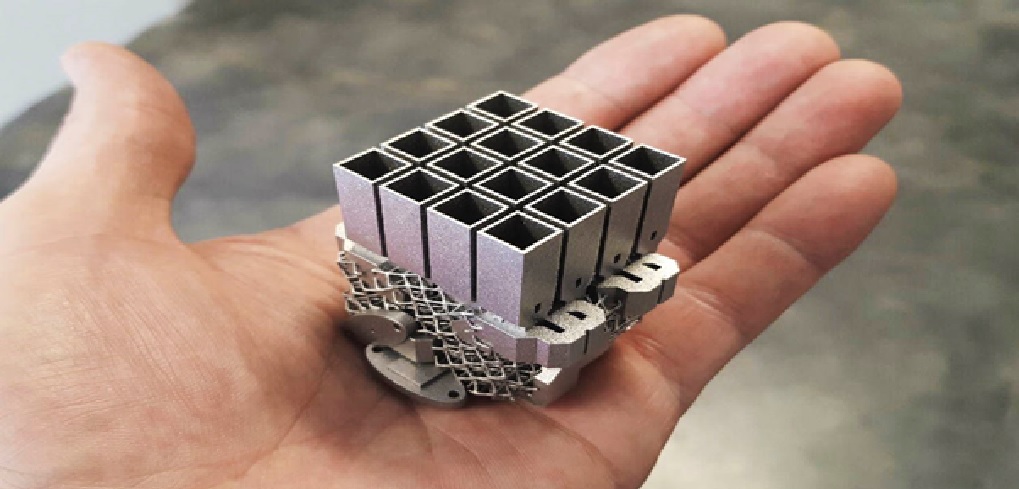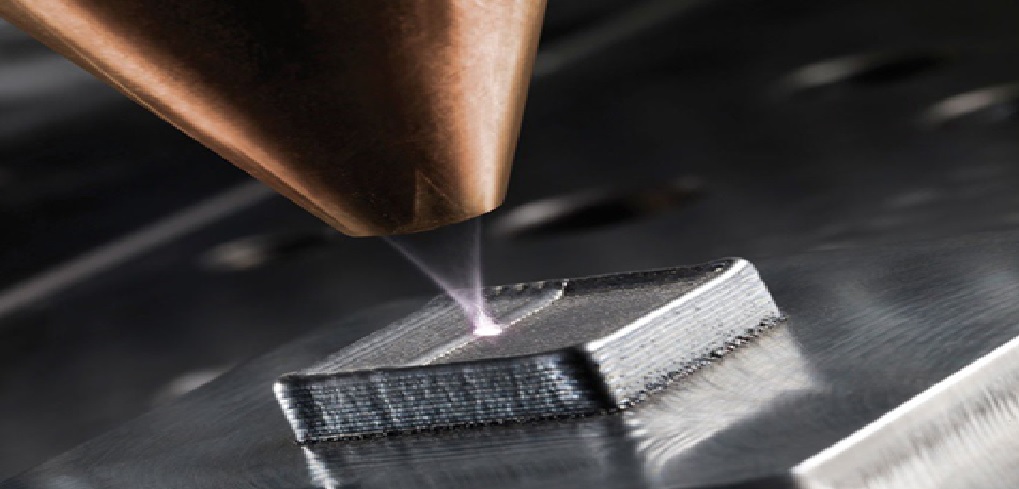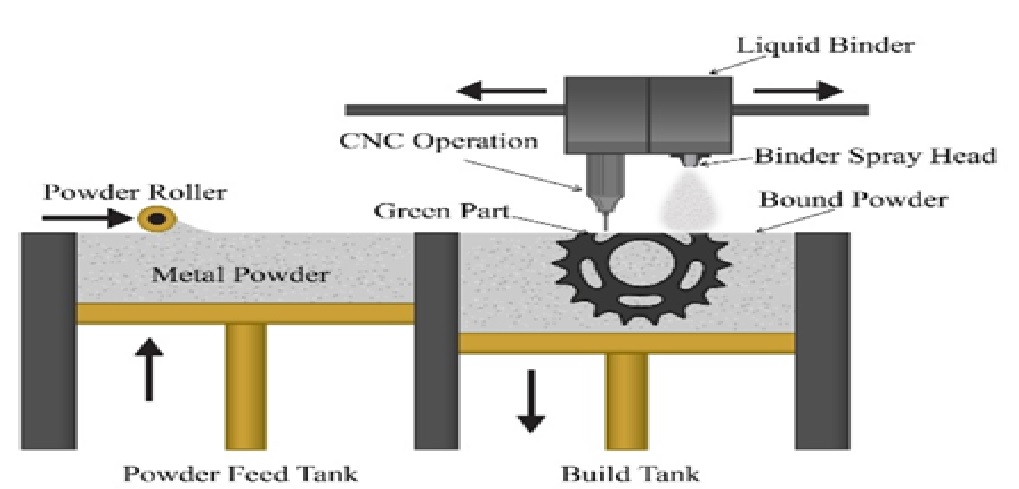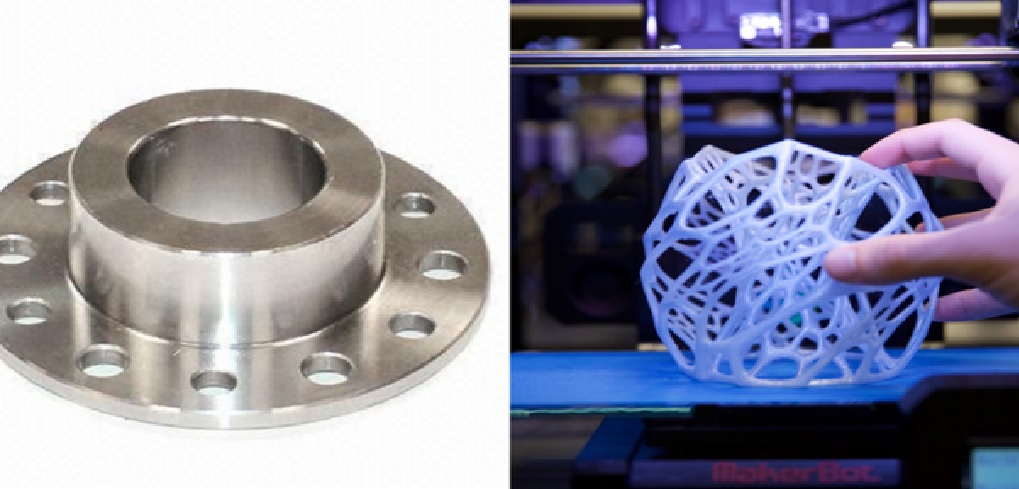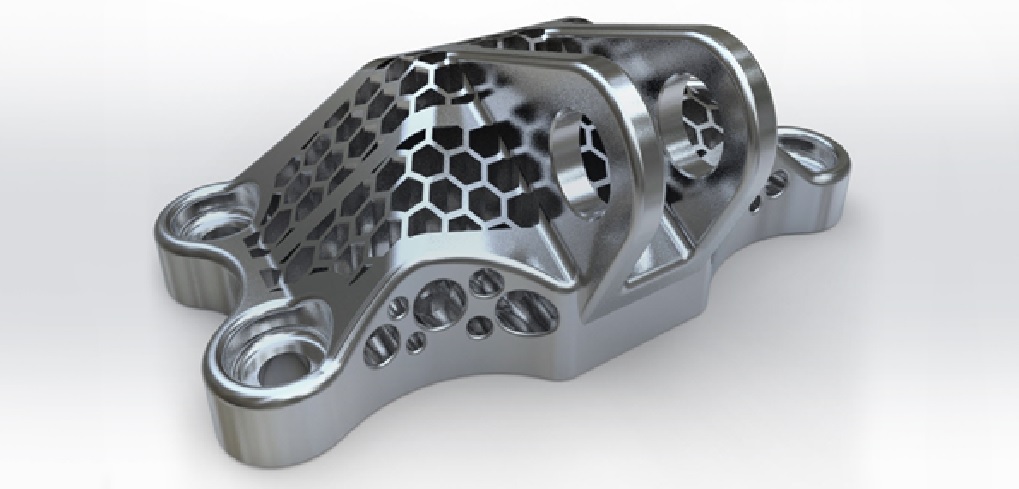The Main Technologies of 3D Metal Printing
Let’s compare the main 3D printing technologies for metal. [1] They are DMLS (Direct Metal Laser Sintering), LMS (Laser Metal Sintering) and EBM (Electron Beam Melting). The SLM and DMLS is shown in figure 1.
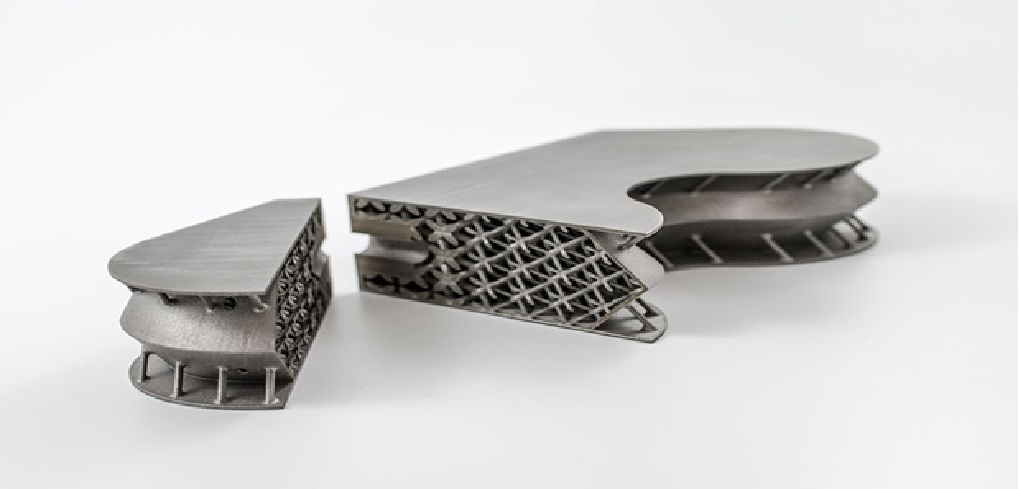
Figure 1: The SLM and DMLS
DMLS
DMLS or Direct Metal Laser Sintering is the most popular method of 3D printing in metal. It uses a laser for sintering metal powder, layer by layer, and forming an object. During the process, stainless steel reaches a temperature of almost 3000 °F. However, the metal is not melted. Among the materials available are a wide variety of metal alloys, including maraging steel, aluminum AlSi10Mg, cobalt chromium, Inconel 625 and titanium Ti6Al4V.
SLM
SLM or Selective Laser Melting, as its title suggests, melts the material. 3D printing happens in an inert gas environment. Thanks to that, a 3D print has parameters close to the one that was produced with casting. SLM is mainly used for manufacturing parts from titanium and aluminum.
Difference Between Metal Sintering and Melting
Sintering uses a combination of heat and pressure to make particles stick together. Melting uses high enough temperatures to cause the particles to fully melt and join together. [2] Sintered parts have high porosity and require heat treatments to be strengthened, though they’ll never be as strong as forged metal parts; melted parts are nearly fully solid and don’t require heat treatments. In the image below you can see the difference between a sintered and melted part. The particles of the sintered part are simply touching real well but there are large gaps between them throughout the body. In contrary to the melted image on the right. The particles seen are melted and the body is a far more cohesive solid mass with no visible voids.
Characteristics of SLM & DMLS
In SLM and DMLS almost all process parameters are set by the machine manufacturer. The layer height used in metal 3D printing varies between 20 to 50 microns and depends on the properties of the metal powder (flowability, particle size distribution, shape etc).
The typical build size of a metal 3D printing system is 250 x 150 x 150 mm, but larger machines are also available (up to 500 x 280 x 360 mm). [3] The dimensionally accuracy that a metal 3D printer can achieve is approximately ± 0.1 mm.
Metal printers can be used of small batch manufacturing, but the capabilities of metal 3D printing systems resemble more the batch manufacturing capabilities of FDM or SLA machines than that of SLS printers: they are restricted by the available print area (XY-direction), as the parts have to be attached to the build platform.
The metal powder in SLM and DMLS is highly recyclable: typically, less than 5% is wasted. After each print, the unused powder is collected, sieved and then topped up with fresh material to the level required for the next built.
Waste in metal printing though comes in the form of support structure, which are crucial for the successful completion of a build but can increase the amount of the required material (and the cost) drastically.
References:
- https://www.treatstock.com/guide/article/106-what-is-metal-3d-printing
- https://3dprinting.com/metal/types-of-metal-3d-printing/
- https://www.hubs.com/knowledge-base/introduction-metal-3d-printing/
Cite this article:
Vinotha D (2021) The Development of Metal 3D Printing Technology, AnaTechmaz, pp 4


